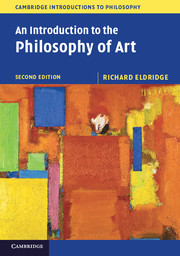Book contents
- Frontmatter
- Contents
- Acknowledgments
- Preface to the second edition
- 1 The situation and tasks of the philosophy of art
- 2 Representation, imitation, and resemblance
- 3 Beauty and form
- 4 Expression
- 5 Originality and imagination
- 6 Understanding art
- 7 Identifying and evaluating art
- 8 Art and emotion
- 9 Art and morality
- 10 Art and society: some contemporary practices of art
- 11 Epilogue: the evidence of things not seen
- Bibliography
- Index
- References
5 - Originality and imagination
Published online by Cambridge University Press: 05 June 2014
- Frontmatter
- Contents
- Acknowledgments
- Preface to the second edition
- 1 The situation and tasks of the philosophy of art
- 2 Representation, imitation, and resemblance
- 3 Beauty and form
- 4 Expression
- 5 Originality and imagination
- 6 Understanding art
- 7 Identifying and evaluating art
- 8 Art and emotion
- 9 Art and morality
- 10 Art and society: some contemporary practices of art
- 11 Epilogue: the evidence of things not seen
- Bibliography
- Index
- References
Summary
Genius and the pursuit of the new: Kant
In presenting a subject matter as a focus for thought and emotional attitude, distinctively fused to the imaginative exploration of material, works of art are evidently special. Where does this special character of art come from? Are successful artists a special class of people, with capacities the rest of us altogether lack? Or do they rather exercise in a special way an imaginative capacity in which we all have a share? What are the roles of training, artistic tradition, and common culture in the development of artistic ability? Can art be taught?
It is commonly thought, and especially widely so in modernity, that artworks are in some way distinctively new and original. Ezra Pound, translating a dictum of Confucius, titled his 1934 collection of critical essays on literature Make it New. John Dewey remarks on “the qualitative novelty that characterizes every genuine work of art.” In Plato’s Ion, Socrates and Ion agree that though Homer and other poets “all treat of the same subjects,” one of them – Homer – “speaks well and the rest of them speak worse,” and this because Homer, like all the good poets, is “inspired, possessed.” Exactly what is going on in Homer that makes his poetry different and special? How does the sort of creative capacity that Homer displays have to do with making things that are distinctively new?
- Type
- Chapter
- Information
- An Introduction to the Philosophy of Art , pp. 115 - 141Publisher: Cambridge University PressPrint publication year: 2014

